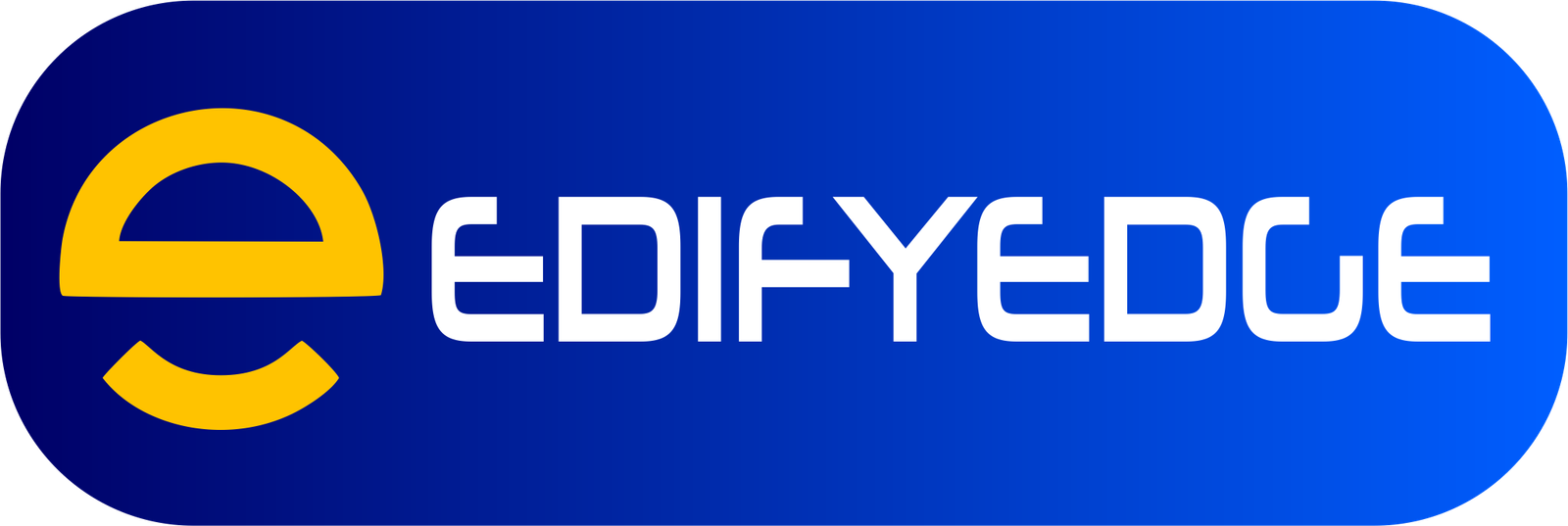What is a Home Equity Loan?
A home equity loan, also known as a second mortgage, allows homeowners to borrow against the equity they’ve built up in their home. Equity is the difference between the current market value of your home and the remaining balance on your mortgage. Lenders will typically allow you to borrow up to 80-85% of your home’s equity as a lump sum.
With a home equity loan, you receive the funds upfront as a one-time, lump-sum payment. You then repay the loan over a fixed term, usually between 5-30 years, with a fixed interest rate and fixed monthly payments. This differs from a home equity line of credit (HELOC), which provides a revolving credit line that you can draw from as needed.
Home equity loans are considered secured loans, meaning your home serves as collateral. This allows lenders to offer relatively low interest rates compared to unsecured loan options like personal loans or credit cards. However, defaulting on a home equity loan puts your home at risk of foreclosure.
How to Qualify for a Home Equity Loan
To qualify for a home equity loan, lenders typically consider several key factors:
Credit Score Requirements
Your credit score plays a crucial role in determining your eligibility for a home equity loan and the interest rate you’ll receive. Most lenders require a minimum credit score of 620-680 for approval, with higher scores resulting in better terms and lower interest rates. Borrowers with excellent credit scores (720 or higher) are more likely to qualify for the best rates and loan amounts.
Equity Requirements
Lenders want to ensure that you have sufficient equity in your home to secure the loan. Generally, you’ll need at least 15-20% equity in your home to qualify for a home equity loan. Equity is calculated by subtracting the remaining mortgage balance from the current market value of your home. The more equity you have, the larger the loan amount you may qualify for.
Income Requirements
Lenders will evaluate your income to determine your ability to repay the loan. They’ll typically require proof of steady employment or income sources, such as pay stubs, tax returns, or bank statements. The higher your income, the more favorable your chances of qualifying for a larger loan amount.
Debt-to-Income Ratio (DTI)
Your debt-to-income ratio (DTI) is a key factor in determining your eligibility for a home equity loan. Lenders calculate your DTI by dividing your total monthly debt payments (including the proposed home equity loan payment) by your gross monthly income. Most lenders prefer a DTI of 43% or lower, although some may accept higher ratios for borrowers with excellent credit and substantial income.
Meeting these qualification criteria can increase your chances of approval and help you secure favorable terms for your home equity loan.
Calculating Your Home Equity
To calculate your home equity, you’ll need to know your home’s current market value and the remaining balance on your mortgage loan(s). The formula for calculating home equity is:
Home Equity = Current Home Value - Remaining Mortgage Balance(s)
For example, if your home is currently worth $300,000 and you have a remaining mortgage balance of $175,000, your home equity would be:
Home Equity = $300,000 - $175,000 = $125,000
Determining your home’s current market value can be tricky, as it fluctuates based on various factors such as location, condition, and the overall housing market. You can get an estimate by checking recent sales prices of comparable homes in your area, or by hiring a professional appraiser.
Your remaining mortgage balance is the amount you still owe the lender on your home loan(s). This information can be found on your monthly mortgage statement or by contacting your lender directly.
It’s important to note that having a significant amount of home equity can be beneficial, as it represents the portion of your home’s value that you truly own. Home equity can be accessed through loans or lines of credit, which can provide funds for home improvements, debt consolidation, or other major expenses.
Home Equity Loan Calculators
These calculators typically consider factors such as:
- Your home’s current market value
- The remaining balance on your mortgage
- Your credit score and income
- Prevailing interest rates
To use a home equity loan calculator, you’ll typically need to input information about your home’s value, your current mortgage balance, and your credit profile. The calculator will then estimate your potential borrowing limit based on the equity you’ve built up in your home.
Many lenders, financial institutions, and personal finance websites offer free online home equity loan calculators. Some popular options include calculators from banks like Chase, Wells Fargo, and Bank of America, as well as those from sites like NerdWallet, Bankrate, and CNET.
When using a home equity loan calculator, it’s important to remember that the results are just estimates. Actual loan amounts and terms may vary based on the lender’s specific underwriting criteria and your individual financial situation. However, these calculators can still provide a helpful starting point for understanding your potential borrowing power and evaluating whether a home equity loan or HELOC could be a suitable option for your needs.
Home Equity Loan Rates and Fees
Home equity loan rates and fees can vary significantly between lenders, so it’s essential to shop around and compare offers. The interest rate is a crucial factor, as it determines the cost of borrowing the loan. Rates are typically based on the prime rate, plus a margin determined by the lender based on your credit score, income, and other factors.
Closing costs are another essential consideration when taking out a home equity loan. These fees can include appraisal fees, title search fees, and origination fees charged by the lender. Closing costs can range from 2% to 5% of the loan amount, so it’s crucial to factor these costs into your calculations.
The annual percentage rate (APR) is a standardized metric that combines the interest rate and fees, providing a more accurate representation of the loan’s total cost. Lenders are required to disclose the APR, which can help you compare offers from different lenders more effectively.
When comparing lenders, it’s essential to consider not only the interest rate but also the fees and APR. Some lenders may offer a lower interest rate but charge higher fees, resulting in a higher overall cost. Additionally, consider the lender’s reputation, customer service, and any additional benefits or features they offer, such as the ability to make biweekly payments or access to online account management tools.
Using a Home Equity Loan
Home equity loans can be used for a variety of purposes, with some of the most common being home improvements, debt consolidation, and covering education costs.
Home Improvements
One of the primary uses of a home equity loan is to finance home renovations or improvements. These loans can provide the funds necessary for projects such as adding an extension, remodeling the kitchen or bathroom, or upgrading the home’s systems (e.g., HVAC, electrical, plumbing). By using a home equity loan, homeowners can access a significant amount of capital to enhance their living space and potentially increase their home’s value.
Debt Consolidation
Home equity loans can also be used to consolidate various debts, such as credit card balances, personal loans, or other high-interest debts. By consolidating these debts into a single home equity loan, borrowers may benefit from a lower interest rate and more manageable monthly payments. This can help simplify the repayment process and potentially save money on interest charges over time.
Education Costs
Another common use of home equity loans is to finance education expenses for oneself or dependents. These loans can cover tuition fees, room and board, textbooks, and other related costs for higher education, such as college or graduate school. By using a home equity loan, borrowers can access funds at potentially lower interest rates than other types of educational loans, making it a viable option for financing education.
It’s important to note that while home equity loans can provide access to substantial funds, they also come with risks. Borrowers should carefully consider their ability to repay the loan and understand that their home serves as collateral, which means they could risk foreclosure if they fail to make the required payments.
Risks of Home Equity Loans
Home equity loans come with several risks that borrowers should carefully consider before taking out this type of financing. The primary risk is that your home serves as collateral, meaning you could face foreclosure if you fail to make the required payments. This puts your most valuable asset at risk and could potentially leave you without a place to live.
Another significant risk is the impact on your credit score. Missing payments or defaulting on a home equity loan can severely damage your credit rating, making it more difficult and expensive to obtain future financing or even find employment or housing.
Additionally, home equity loans typically have longer repayment terms than traditional loans, often spanning 10 to 30 years. While this can make the monthly payments more manageable, it also means you’ll be paying interest for an extended period, potentially costing you significantly more in the long run.
It’s also important to consider the potential for declining home values. If your home’s value decreases, you could end up owing more than the property is worth, a situation known as being “underwater” on your mortgage. This can make it challenging to refinance or sell your home in the future.
Home Equity Loan vs. HELOC
Both home equity loans and home equity lines of credit (HELOCs) allow you to borrow against the equity in your home, but they work differently. Here are the key differences:
Lump Sum vs. Revolving Credit
A home equity loan provides a lump sum upfront that you repay over a fixed term, usually 5-30 years. A HELOC works more like a credit card, providing a revolving line of credit that you can draw from as needed, up to the approved limit.
Fixed vs. Variable Interest Rates
Home equity loans typically have fixed interest rates, so your monthly payments remain the same over the loan term. HELOCs often have variable interest rates tied to a benchmark rate, so your payments can fluctuate.
Interest-Only Payments
With a HELOC, you may only be required to pay interest during the draw period, typically 10 years. After that, you must pay off the principal balance, either through a lump sum or amortized payments.
Closing Costs
Both products may have closing costs, but they are generally lower for HELOCs since the lender’s risk is reduced by the ability to freeze the line of credit.
Repayment Flexibility
HELOCs offer more repayment flexibility since you only pay interest on the amount you borrow. With a home equity loan, you must repay the full amount borrowed plus interest.
The right choice depends on your needs and financial situation. A home equity loan may be better for a one-time expense, while a HELOC works well for ongoing or unpredictable expenses.
Tax Implications of Home Equity Loans
The tax treatment of home equity loans can be complex, but understanding the rules is crucial for maximizing your potential tax savings. Historically, the interest paid on home equity loans was tax-deductible, but the Tax Cuts and Jobs Act of 2017 introduced significant changes to this deduction.
Under the current tax law, the deductibility of home equity loan interest depends on how you use the loan proceeds. If you use the funds for home improvements or renovations, the interest remains deductible, subject to certain limits. However, if you use the loan for personal expenses, such as paying off credit card debt or financing a vacation, the interest is no longer deductible.
It’s important to note that the total amount of deductible mortgage interest, including interest on your primary mortgage and home equity loans, is limited to $750,000 for loans originated after December 15, 2017. For loans originated before that date, the limit is $1 million. Additionally, the deduction is only available if you itemize your deductions on your tax return.
If you plan to use a home equity loan for home improvements, it’s crucial to keep detailed records of the expenses, including receipts, invoices, and contracts. These records will help substantiate your deduction in case of an IRS audit.
It’s also worth noting that the tax rules surrounding home equity loans are subject to change, and it’s always advisable to consult with a qualified tax professional to ensure you’re taking advantage of all available deductions and complying with the latest regulations.
Alternatives to Home Equity Loans
While home equity loans offer a way to tap into your home’s value, they are not the only option available. Here are some alternatives to consider:
Cash-Out Refinance
A cash-out refinance involves refinancing your existing mortgage for a higher amount than what you currently owe. The difference between the new mortgage and the remaining balance on your old mortgage is paid out to you in cash. This option can be advantageous if you can secure a lower interest rate than your current mortgage or if you want to consolidate multiple loans into one payment.
Personal Loans
Personal loans are unsecured loans that don’t require collateral, making them a viable alternative if you don’t want to put your home at risk. These loans typically have higher interest rates than secured loans like home equity loans, but they can be a good option for smaller amounts or shorter repayment periods.
Credit Cards
While not an ideal long-term solution due to high-interest rates, credit cards can be a useful option for smaller expenses or short-term financing needs. However, it’s essential to exercise caution and have a plan to pay off the balance promptly to avoid accumulating excessive interest charges.
Borrowing from Retirement Accounts
If you have a 401(k) or other retirement account, you may be able to borrow against it. This option allows you to access funds without incurring additional debt, but it also carries risks, such as potential taxes and penalties if you fail to repay the loan on time.
Borrowing from Life Insurance Policies
Some whole life insurance policies allow you to borrow against the cash value of the policy. This option can be advantageous because the interest rates are typically lower than other types of loans, and the loan is not taxable. However, it’s crucial to understand the potential impact on your policy’s death benefit and cash value.
When considering alternatives to home equity loans, it’s essential to carefully evaluate your financial situation, the purpose of the loan, and the associated risks and costs. Consulting with a financial advisor can help you make an informed decision that aligns with your long-term financial goals.
Home Equity Loan Application Process
The application process for a home equity loan typically involves the following steps:
Required Documentation
Lenders will require you to provide various documents to verify your income, assets, and home value. Common documents needed include:
- Proof of income (W-2 forms, pay stubs, tax returns)
- Bank statements and investment account statements
- Home appraisal or estimate of home value
- Mortgage statements
- Photo ID and Social Security number
Underwriting Process
Once you’ve submitted your application and supporting documents, the lender will go through an underwriting process to assess your creditworthiness and the value of your home. This may involve:
- Credit check
- Income verification
- Appraisal of your home’s value
- Review of your debt-to-income ratio
The underwriter will evaluate your overall financial situation to determine if you qualify for the loan and at what interest rate and terms.
Approval Timeline
The approval process for a home equity loan can take several weeks, depending on the lender and the complexity of your application. Generally, you can expect:
- Initial approval within a few days to a week after submitting your application
- Final approval after the underwriting process, typically 2-4 weeks
- Closing on the loan 1-2 weeks after final approval
During this time, the lender may request additional documentation or clarification. Being responsive and providing all required information upfront can help expedite the process.



